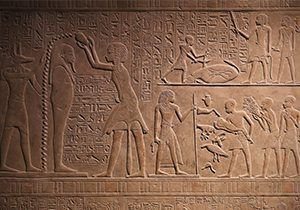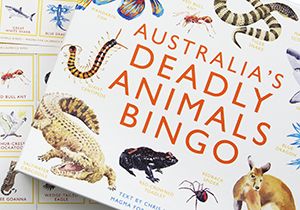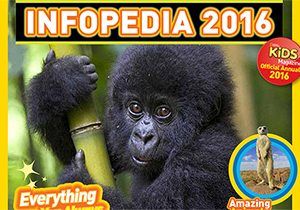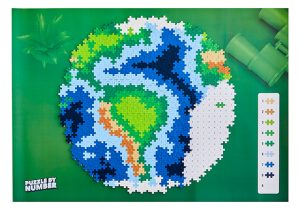
Polar Bear Primary Resource
Learn all about this Arctic animal
These primary resource sheets introduce children to the life of the polar bear. Discover how polar bears live, hunt and care for their young, and learn about the efforts being made to protect these Arctic animals. How do polar bears survive in their ice-cold habitats? What threats do polar bears face? How are scientists able to track these amazing animals?
Pupils will gain in-depth knowledge of polar bears in these two fact-filled polar bear primary resources. Follow a mother and her new-born cubs on a journey in search of food in Polar Bears on the Move (download below). And in Undercover Polar Bears, join a team of scientists as they track and research this vulnerable species (download below).
These teaching resources can be used in study group tasks for discussing polar bear behaviour and conservation, as well as learning about how animals have adapted to survive and care after their young in harsh environments. The resources could be used as printed handouts for each pupil to review and annotate, or for display on the interactive whiteboard for class discussion.
Activity: Ask pupils to write an account about a day in the life of a polar bear. They could imagine they are a polar bear adult or cub, and write about their different experiences in the Arctic (e.g. hunting for food, digging/leaving their den, crossing water, the dangers they face, etc.). The children could also draw a picture of a polar bear with annotations explaining how the animal is adapted to life in the Arctic, i.e. fur and body fat to keep warm, large, webbed paws for walking on the snow and swimming, sharp claws for hunting, etc.
N.B. The following information for mapping the resource documents to the school curriculum is specifically tailored to the English National Curriculum and Scottish Curriculum for Excellence. We are currently working to bring specifically tailored curriculum resource links for our other territories; including South Africa, Australia and New Zealand. If you have any queries about our upcoming curriculum resource links, please email: schools@ngkids.co.uk
This Animals primary resource assists with teaching the following Key Stage 1 Science (Year 1) objectives from the National Curriculum:
Pupils should be taught to:
- identify and name a variety of common animals including fish, amphibians, reptiles, birds and mammals
- identify and name a variety of common animals that are carnivores, herbivores and omnivores
- describe and compare the structure of a variety of common animals (fish, amphibians, reptiles, birds and mammals, including pets)
Pupils might work scientifically by: using their observations to compare and contrast animals at first hand or through videos and photographs, describing how they identify and group them; grouping animals according to what they eat; and using their senses to compare different textures, sounds and smells.
National Curriculum Key Stage 1 Science (Year 2) objective:
Pupils should be taught to:
- identify that most living things live in habitats to which they are suited and describe how different habitats provide for the basic needs of different kinds of animals and plants, and how they depend on each other
- identify and name a variety of plants and animals in their habitats, including micro- habitats
- describe how animals obtain their food from plants and other animals, using the idea of a simple food chain, and identify and name different sources of food.
Pupils should be introduced to the idea that all living things have certain characteristics that are essential for keeping them alive and healthy. They should raise and answer questions that help them to become familiar with the life processes that are common to all living things. Pupils should be introduced to the terms ‘habitat’ (a natural environment or home of a variety of plants and animals) and ‘micro-habitat’ (a very small habitat, for example for woodlice under stones, logs or leaf litter).
Pupils should compare animals in familiar habitats with animals found in less familiar habitats, for example, on the seashore, in woodland, in the ocean, in the rainforest.
Pupils should be taught to:
- notice that animals, including humans, have offspring which grow into adults
- find out about and describe the basic needs of animals, including humans, for survival (water, food and air)
Pupils should be introduced to the basic needs of animals for survival, as well as the importance of exercise and nutrition for humans. They should also be introduced to the processes of reproduction and growth in animals. The focus at this stage should be on questions that help pupils to recognise growth; they should not be expected to understand how reproduction occurs.
National Curriculum Lower Key Stage 2 Science (Year 3) objective:
Pupils should be taught to:
- identify that animals, including humans, need the right types and amount of nutrition, and that they cannot make their own food; they get nutrition from what they eat
- Compare and contrast the diets of different animals (including their pets) and decide ways of grouping them according to what they eat. They might research different food groups and how they keep us healthy and design meals based on what they find out.
National Curriculum Lower Key Stage 2 Science (Year 4) objective:
Pupils should be taught to:
- recognise that living things can be grouped in a variety of ways
- explore and use classification keys to help group, identify and name a variety of living things in their local and wider environment
- recognise that environments can change and that this can sometimes pose dangers to living things
- construct and interpret a variety of food chains, identifying producers, predators and prey
National Curriculum Upper Key Stage 2 Science (Year 5) objective:
Pupils should be taught to:
- describe the differences in the life cycles of a mammal, an amphibian, an insect and a bird
This Animals primary resource assists with teaching the following Sciences Early level objectives from the Scottish Curriculum for Excellence:
- I have observed living things in the environment over time and am becoming aware of how they depend on each other
This Animals primary resource assists with teaching the following Sciences First level objectives from the Scottish Curriculum for Excellence:
- I can explore examples of food chains and show an appreciation of how animals and plants depend on each other for food.
- By comparing generations of families of humans, plants and animals, I can begin to understand how characteristics are inherited
Scottish Curriculum for Excellence Second level Sciences objectives:
- I can identify and classify examples of living things, past and present, to help me appreciate their diversity. I can relate physical and behavioural characteristics to their survival or extinction.
- I can use my knowledge of the interactions and energy flow between plants and animals in ecosystems, food chains and webs. I have contributed to the design or conservation of a wildlife area.
Scottish Curriculum for Excellence Third level Sciences objectives:
- I can sample and identify living things from different habitats to compare their biodiversity and can suggest reasons for their distribution.
Scottish Curriculum for Excellence Fourth level Sciences objectives:
- I understand how animal and plant species depend on each other and how living things are adapted for survival. I can predict the impact of population growth and natural hazards on biodiversity.
This Geography primary resource assists with teaching the following Social Studies First level objective from the Scottish Curriculum for Excellence:
- By exploring climate zones around the world, I can compare and describe how climate affects living things.
Scottish Curriculum for Excellence Second level Social Studies objective:
- By comparing my local area with a contrasting area outwith Britain, I can investigate the main features of weather and climate, discussing the impact on living things.
Download primary resource
More Like

Fascinating facts about hieroglyphics!

Australia’s Deadly Animals Bingo!

Infopedia 2016









LEAVE A COMMENT
THANK YOU
Your comment will be checked and approved shortly.
WELL DONE,
YOUR COMMENT
HAS BEEN ADDED!
COMMENTS
CUSTOMIZE YOUR AVATAR